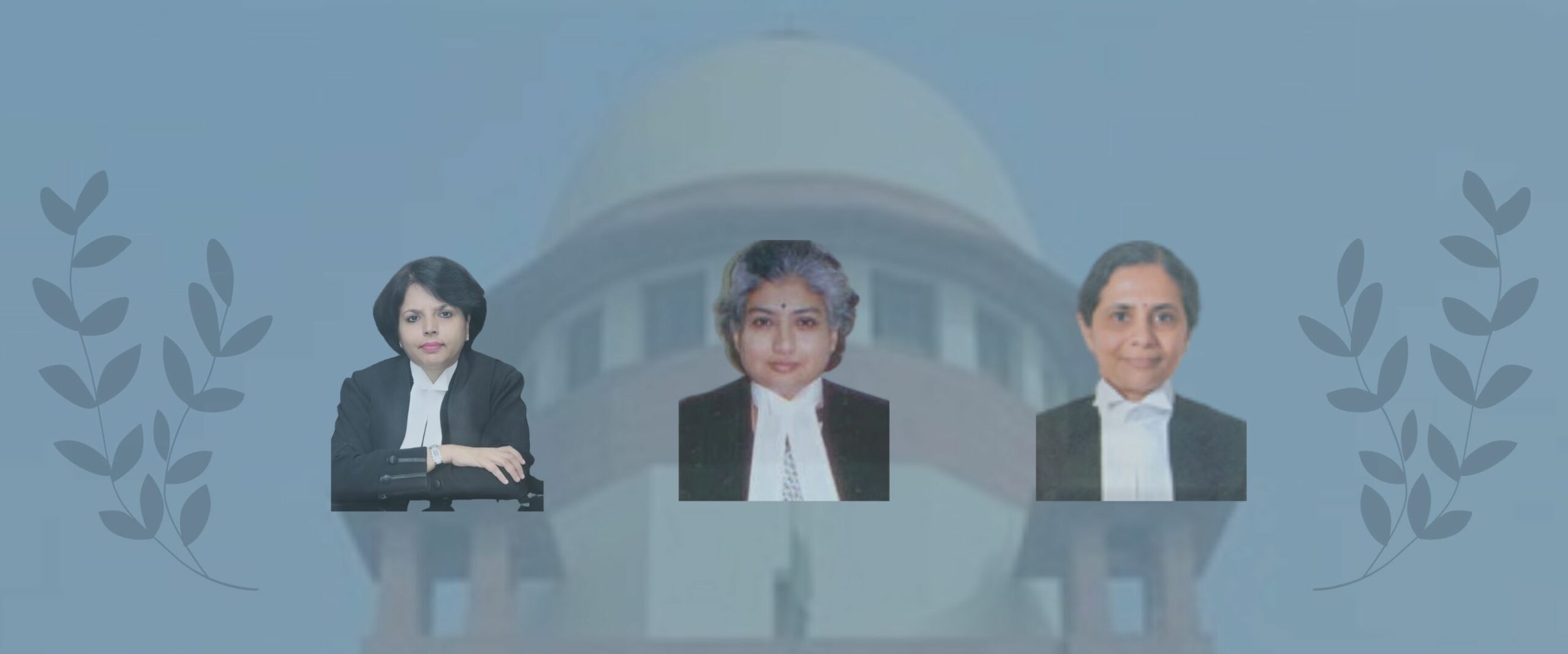Analysis
Is Gender Now a Criteria For Appointing SC Judges?
While the primary criteria for SC appointments has always been seniority, some argue that gender should also be an important consideration.

After Justice Indu Malhotra’s retirement in March 2021, senior Supreme Court (SC) judges expressed the need for more women in the higher judiciary. Bobde CJI also said that the time had come for a woman CJI. With the new collegium appointments, this may finally be a possibility.
In its 71-year history, the SC has developed certain unwritten criteria for the selection of judges, outside of what is prescribed by the Constitution. The most relevant criteria is seniority, with the most senior High Court (HC) judges being preferred for appointment. Usually, Chief Justices are appointed to the SC. Some argue that this unwritten criteria does not take gender diversity into account, and that it should be included.
In August, three women judges were appointed to the Supreme Court. B.V. Nagarathna J is in line to become the first woman Chief Justice of India (CJI) in 2027. It appears that alongside seniority, ensuring gender diversity was also an important consideration with this round of appointments.
It appears that appointing diverse judges has been given priority while seniority has taken a backseat. For instance, although Akhil Kureshi (Chief Justice of the Tripura HC) is one of the senior-most HC judges, he was not appointed to the SC. Meanwhile, Nagarathna J was 33rd in the High Court seniority list before she was elevated to the Supreme Court.
Reportedly, the recently retired Nariman J had insisted upon the elevation of Kureshi J due to his seniority and brought the collegium to an impasse.
However, it may be too soon to consider gender diversity as a new criteria for appointments. Especially considering the judiciary’s chequered history with gender representation.
Judicial Appointments: Merit, Transparency and Diversity
Since 1950, there have been 247 Supreme Court judges. Only eight have been women. As of June, only 76 out of 650 HC judges were women. Hima Kohli CJ (Telangana HC) was the only woman HC Chief Justice. She has now been appointed to the SC which leaves the HCs with no woman Chief Justices.
The higher judiciary has not taken active measures to ensure gender diversity. Merit has been seen as the primary criteria for appointments. Seniority of HC judges has been considered to be a proxy for merit in discussions regarding Supreme Court appointments. This stems from the 14th, 79th and 80th reports from the Law Commission of India where communal, political and regional considerations were rejected.
The Supreme Court has always considered seniority as a convention for appointments. This was briefly rebuked by Prime Minister Indira Gandhi when she appointed Justice A.N. Ray as CJI in 1973. CJI Ray was appointed despite there being three sitting judges more senior than him. Following the Emergency, the Court further prioritised seniority in order to limit the interference of the executive.
However, making seniority the guiding principle for appointment arguably excludes marginalised groups in India, including women. These groups face multiple barriers of entry in gaining positions in the higher judiciary.
Along with this, India is the only constitutional democracy where the judiciary appoints its own judges. Some argue that this results in a lack of transparency and accountability in the collegium’s decisions. The considerations and the discussions behind these decisions are not available to the public There is a lack of clarity on the criteria for appointment.
On the other hand, the South African Constitution provides for a Judicial Service Commission comprising members of the judiciary, executive and legislature. Further the Constitution expressly provides that the judiciary should reflect the racial and gender composition of the country. This has resulted in a radical change in the composition of the South African Judiciary. Between 1994 and 2011, the number of women in the judiciary had increased from 9 to 61.
Does the Collegium’s August Recommendation Indicate a Change?
The recent recommendations represent a gesture towards a more gender diverse SC. For the first time there are four sitting women judges in the SC.
However, a single instance of multiple women judges being recommended may not mean that gender is now a factor for judicial appointments. The only way to know whether it is now a criteria is if the collegium’s appointment process is made transparent.







